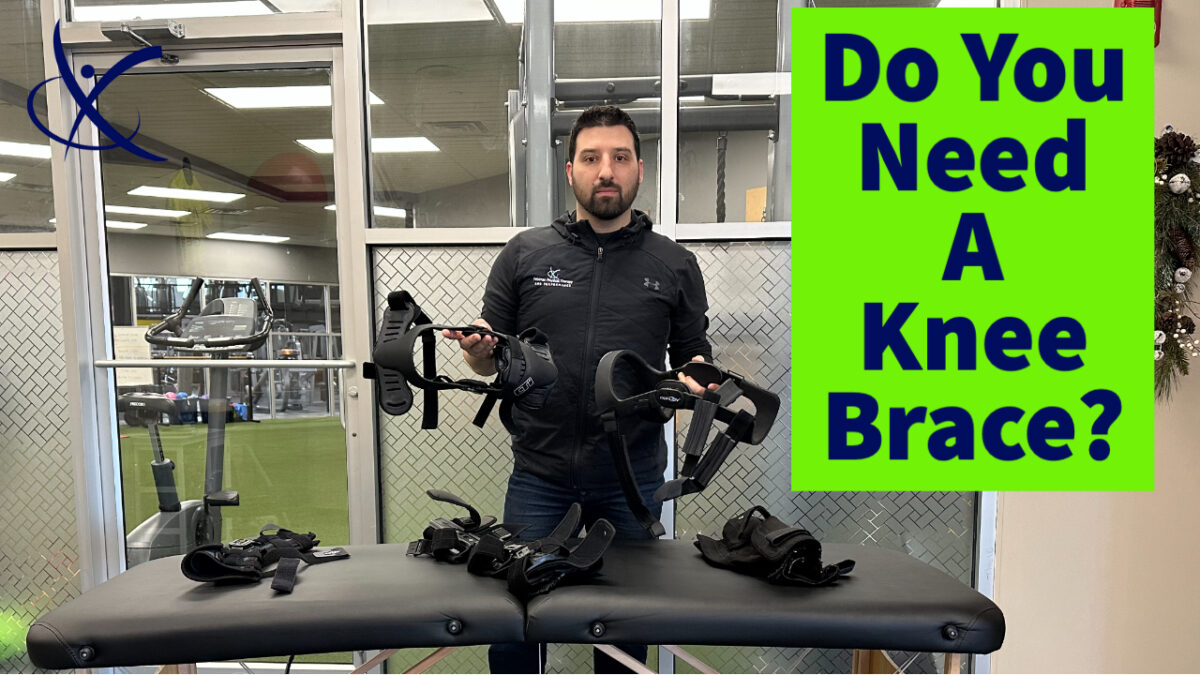
Cheers To 10 Amazing Years
March 2, 2023Why Do Things Hurt?
April 23, 2023Do I Need a Knee Brace?
Wearing a knee brace after a major injury or surgery is an integral part of Return to Sport (RTS). We hear opinions from the athletes themselves, parents, and coaches. And they can be all over the map. Some people see value in them, and some people cannot stand the braces. Regardless, the surgeon will have the final say post-op for RTS and there should be a clear discussion with the timeline between the athlete and rehab professional. They may be required, but they certainly aren’t permanent.
I see value in using a knee brace for initial RTS because it is an added layer of security. It’s a cheap insurance policy…provided that the athlete is comfortable and can move “normally.” Even the best and most comprehensive training sessions will not prepare an athlete for the rigors of another team or another opponent at high intensity. We assume all criteria are met for RTS and then the brace can add additional buttressing for the knee during multidirectional movements or contact sports. This is crucial during the adaptation phase of RTS.
As I mentioned, I see value in the added layer of security while the athlete is adapting during the first year of competition. This is a common timeframe for brace prescription from the surgeon if applicable. Four, Six, and Twelve months are commonly seen for structural knee injuries/surgeries. I’ve never regretted temporary extra caution with my athletes and there will always be some adaptation during the re-integration into competition.
What can this mean for the athlete? Well first things first, I know you may not want to wear it. Or you may find it uncomfortable or awkward to wear. This is where it is important to start wearing the brace early and often. Wear it around the house. Wear it walking up and down stairs. Wear it while running errands (pun intended). The more you get used to it the more you will minimize the risk of awkward athletic movements. It is important to get used to wearing it while walking around, running in a straight line, performing your strength training, and also while jumping, sprinting, landing, and twisting. The more you can practice, the better.
Also keep open lines of communication with your rehab staff, surgeon, or physician. Advocate for yourself. If it is uncomfortable then speak up and don’t let someone force your square peg into a round hole. If something needs to change then loop the medical team in on the conversation and ask what can be done. Sometimes braces can be modified or sometimes a different brace altogether is necessary.
Braces for RTS after knee injury are simply part of the process for the lion’s share of structural knee injuries. But the athlete is not a passive player in the process. The harder you train, the more you perfect your technique, the faster you maximize your strength, and the more low-hanging fruit you can pick, then the faster your body will be ready to compete back at the highest level without restriction. Vocalize your goals and plan with your medical team, just never discontinue that knee brace without permission.
…or you can be like Tom Brady who wore his for games only for almost a decade. He seems rather successful 😉
Happy Playing!





